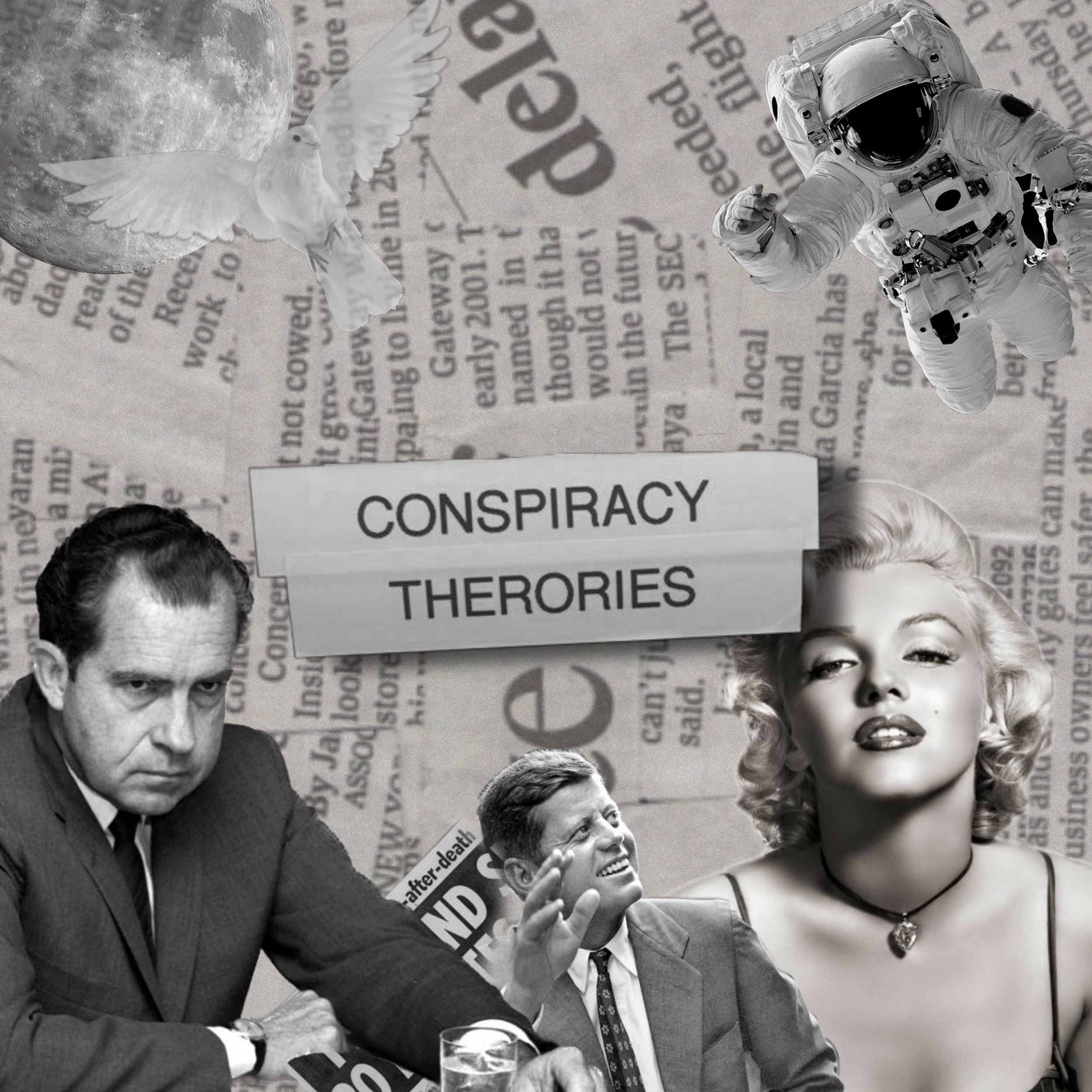Implications of Conspiracies in Media
Gigi Kim
The moon landing was fake. There are microchips in your vaccines. The Parkland shooting was staged. Climate change is a government hoax. Conspiracy theories have long been rampant disruptors in how we consume and make sense of the media in the digital age—where crowdsourced information spreads at a rapid pace. Due to these speculations’ attention-grabbing nature, conspiracies appeal to and feed our innate curiosity as humans. However, conspiracy theories can diverge from being harmless musings to becoming fuel for unnecessary paranoia, ultimately deterring media consumers from engaging with credible sources and seeking out the truth. Studies have shown that 59 percent of Americans receive their news from social media, and nearly 40 percent of young Americans between the ages of 18 and 29 do not believe it is necessary to double-check the news they read online. These alarming statistics surrounding media literacy reveal the need for greater education about identifying trustworthy sources for news.
During the COVID-19 pandemic, there was a rise in vaccine conspiracies that purported that vaccines were linked to autism, or even embedded microchips in individuals on behalf of the government. These baseless conspiracies damaged public health policy initiatives that were implemented during this period, sparking an irrational rise in skepticism within American households.
Even so, public fear over vaccines has existed for years. Take Robert F. Kennedy Jr., a staunch anti-vaccine activist, who took the lead in pushing misleading anti-vaccine propaganda in 2015. Organizations like the Centers for Disease Control and Prevention (CDC) and World Health Organization (WHO) have been continuously debunking false claims about vaccines, citing extensive research clarifying there is no credible evidence linking vaccines to autism.
Artwork by Lucy Hunter
Such uncorroborated speculations feed into distrust of credible institutions; individuals become bound to experience paranoia and even reject information derived from legitimate sources. This polarizes society and creates a harmful trend where some people believe that scientists and even the government are in on creating lies. Individuals are more likely to be drawn to conspiracy theories in political settings, as many choose to believe irrational conspiracies due to confirmation bias (the tendency to seek information that supports one’s beliefs). No one person is completely devoid of excitedly feeding their inkling of belief in conspiracy theories while scrolling on Reddit megathreads or the comment sections of social media news. Although scientists have agreed that having some skepticism to an extent about official accounts of events is healthy, individuals who are consistently skeptical about the happenings of real events are often more prone to anxiety and have obsessive natures.
The right-wing QAnon conspiracy movement, for example, spearheaded a theory that emerged in 2017, claiming that Donald Trump was waging a secret war against a cabal of Satan-worshiping pedophiles. This gained rapid traction online, not only influencing individual beliefs but the political landscape as a whole, even having links to the January 6 Capitol Riot in 2021. Capitol rioters loyal to the QAnon conspiracy believed in allegations of mass election fraud in the 2020 election, a message of the dangers of conspiratorial violence in politics.
The unfounded claims that make up conspiracy theories gradually permeate into sounding “real” through the illusory truth effect, where repeated information is perceived to sound correct after being repeated frequently. So, despite how exciting and thrilling conspiracy theories seem, it is difficult to dispel beliefs in bogus narratives against real news accounts. The best method in alleviating the dangers of conspiracy theories is through media literacy education; an informed society is the strongest antidote to combating the seep of distrust and skepticism that conspiracy theories invoke.
